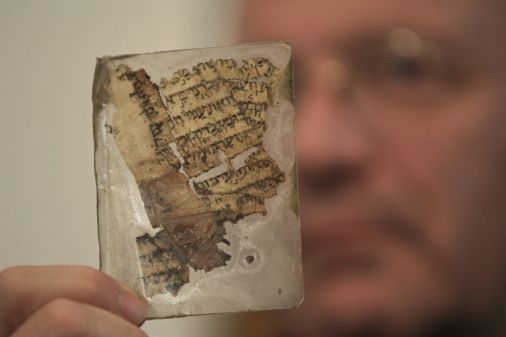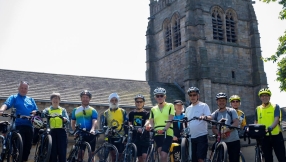
When I was a serious Bible student, competent in Greek and wrestling with Hebrew (I retired hurt), my reference books took up a fair-sized chunk of a shelf. They were expensive, too, especially the Hebrew ones. And all those comparative translations, analytical lexicons, interlinears and expository dictionaries meant that chasing down the meaning of a word, a phrase or an idea could take a long time and involve half a dozen books open all at once.
The internet changed all that of course. But a project run by Tyndale House in Cambridge has taken the sharing of biblical scholarship to the next level, with a programme that's staggering its range and ambition.
The brainchild of Baptist minister Rev Dr David Instone-Brewer, Scripture Tools for Every Person – STEP – is designed especially for teachers and preachers who might not have deep pockets or a convenient library. It's particularly useful in developing countries where the internet is patchy or unreliable, as it can be used offline after the (free) download.
But what does it do?

Open up the STEP Bible at Genesis 1, for instance. There a list of cross-references down the left hand side. Now hover over a word, like 'expanse'. All the other instances will be highlighted as well. There's a dictionary definition and the number of times it appears in the Bible. Click on it and it gives the original Hebrew and its precise meaning and derivation. The different Hebrew forms of the word are also listed.
You can also look up a passage in three different translations at once. You can ask STEP to search for particular words in Hebrew or Greek. You can also mix searches – you could look for any word translated as 'throne' in the Prophets and the New Testament, but only in verses concerning the topic 'David'. This excludes verses which refer to a 'throne' in other contexts.
There's even an interlinear translation facility, so that the exact English word for a Hebrew or Greek word appears underneath it – very useful for beginners or improvers who want to get a feel for the language.
It gets better. An English-only version would be extremely useful, but the interface is available in dozens of different languages – and more are planned.
Instone-Brewer recalls the genesis of the project, launched two years ago. "I remember walking and kicking autumn leaves, when God prompted me to share the treasures of Cambridge Bible scholarship by using software," he tells Christian Today. "Tyndale House backed me, and named it Scripture Tools for Every Person. Actually, I had no idea it would turn out so good. It does things I didn't dream of at first."
He's particularly pleased with the way it can be used offline and in countries around the world.
"STEP runs in an internet browser even when the internet doesn't work. This ability to download and run offline is absolutely necessary for our most important users – ie those struggling to study the Bible in disadvantaged counties, with few resources and huge commitment.
"In Saudi Arabia STEP opens in Arabic and in Hong Kong it opens in Traditional Chinese. Fifty different language interfaces give access to Bibles and commentaries in 280 languages. We have hundreds more in the wings, in order to communicate in every mother tongue."
But useful as STEP is at the moment, it's only scratched the surface of what's envisaged for its future. Developer Chris Burrell, who's given much of his time on a voluntary basis with the help of a team of volunteers, says that STEP wants to add a mobile application and hundreds more Bibles. But the implications for scholarship are even more exciting. Tyndale House is compiling a exhaustive list of all possible meanings of the original manuscripts as well as all the significant differences in manuscript readings. The user will be allowed to click on a word in the passage and change the word to an alternative.
It's also working on a geographical resource. Tyndale House has a set of high resolution images of Israel taken before industrialisation, which reflect what Israel looked like when Jesus walked the earth. They are so detailed that you can see winepresses and threshing floors as well as field boundaries.
It will also allow users to plot different locations against biblical texts – so if Jesus goes from A to B via C, and C isn't in a straight line, the reader knows that Jesus might have made a deliberate detour.
Tyndale House also hopes to integrate with Flickr to be able to provide photos of what the scenery looks like at various places in the Bible today, and is also working on a history timeline to help students find when different events happened and how they relate to other events. It's also hoping to include encyclopaedias and articles to offer even more help.
Burrell says: "One key thing for us is to be Bible-first and Bible-centric. So our driving factor is, with all this data, how can we help people understand the Bible more? How can we get them reading the Bible more? How can we get people to engage with it more and spend more time in it, digging for the treasures? And in particular, how can we do that regardless of your language or finances?
The main thing holding STEP back at the moment, he says, is volunteers – people who can read English, or people who can edit articles, or people who can program software. "Generally, if there's a willing heart, we'd have somewhere in the project where we can fit you in!"
STEP Bible can be downloaded free here.
For more information contact David Instone-Brewer at Tyndale House, tel 01223 566601, email STEP@tyndale.cam.ac.uk
Follow @RevMarkWoods on Twitter.










